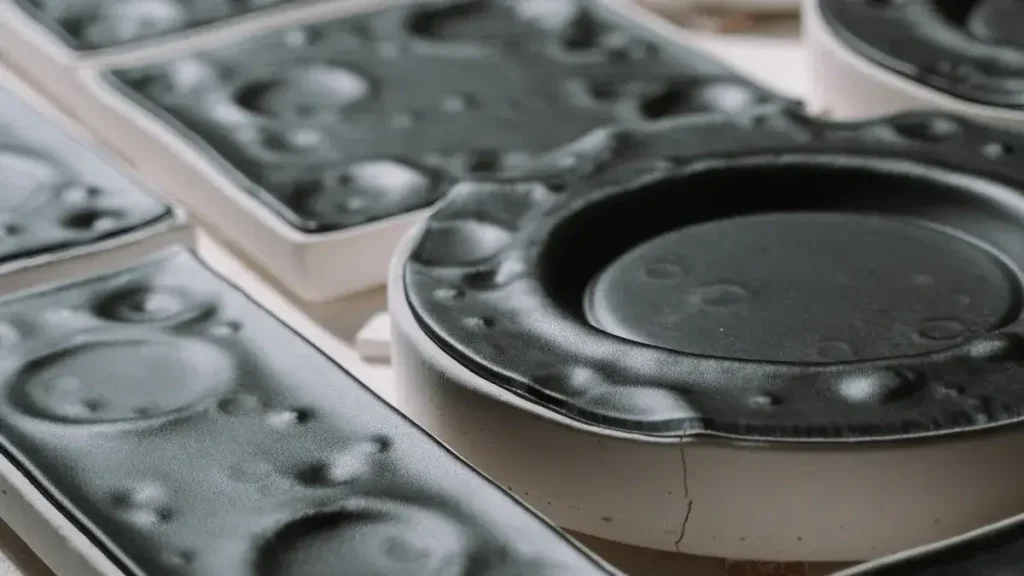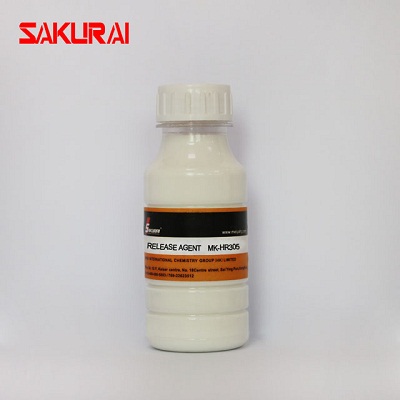I know picking the right mold release agent is important. It can change how things turn out in car-making. When I use carbon fiber body parts or battery cases, I want fast curing. I need it to cure at low heat, between 80 and 120°C. I also think about the environment. Water-based choices are better for this. For example, one car company uses a special water-based release agent with silicone resin. This agent keeps VOCs low, only 80g/L. One spray lets me release four parts one after another. The surface is smooth, with Ra at or below 1.6μm. This means I can paint right away. I finish each part in 15 minutes. I see that picking the right agent stops problems like flash or porosity. It lowers defects and helps make better parts faster.
Key Factors in Mold Release Agent Selection
Material and Mold Compatibility
When I pick a mold release agent, I look at the mold type and the material I want to use. In car making, I often work with carbon fiber parts and battery cases. These need a mold release agent that works at low heat and cures fast, between 80 and 120°C. I like water-based mold release agents for these jobs. They are better for the environment and work well with modified silicone resin. For example, on a carbon fiber door line, I use a water-based agent with only 80g/L VOCs. One spray lets me release four parts in a row. The surface is smooth, with Ra at or below 1.6μm, so I can paint right away.
I also make sure the mold material and the mold release agent work well together. Here is a table that helps me match the right agent to the mold:
| Mold Material | Compatible Release Agents |
|---|---|
| Polyurethanes | Silicone or specialized non-silicone releases |
| Epoxies | Semi-permanent or wax-based releases |
| Rubber compounds | Specific formulations based on cure chemistry |
| Thermoplastics | Different releases than thermosets |
I always check that the mold release agent fits both the mold and the part material. This helps me stop defects and keeps the process running smoothly.
Molding Process Needs
I pay close attention to the molding process when I pick a mold release agent. In car making, thermoplastic molding is very common. I need a mold release agent that makes a barrier and helps me remove parts easily. This is important for making lots of parts fast. I use different types of mold release agents, like semi-permanent or sacrificial, depending on the job. This choice helps me make more parts and keeps them good.
- Thermoplastic molding shapes plastic parts quickly.
- The right mold release agent helps me make more parts and keeps them good.
- A good agent makes it easy to remove parts, which is important in busy factories.
- I pick semi-permanent or sacrificial mold release agents based on the job.
When I work with carbon fiber or battery cases, I use water-based mold release agents. These agents help me meet environmental goals and keep the process fast. I can finish each part in 15 minutes, which speeds up the whole process.
Performance and Efficiency
I always look for mold release agents that help me work better and faster. Good agents stop materials from sticking and give me a smooth finish. This matters for parts that face tough conditions, like tires, dashboards, and body panels. I want agents that lower defects and help molds last longer.
Here is a table that shows the benefits I get from good mold release agents:
| Benefit | Description |
|---|---|
| Smooth Demolding | Easy removal of parts, faster cycle time, more parts made. |
| Reduced Defects | Fewer imperfections, better quality, less waste. |
| Extended Mold Life | Molds last longer, lower costs, better production efficiency. |
| Superior Surface Finishes | High-quality finishes that meet automotive standards. |
| Compatibility with Advanced Materials | Works with many materials used in automotive manufacturing. |
I notice that cycle times change based on the mold release agent I use. Sometimes, it takes only two seconds to release a part. Other times, it takes up to ten minutes, depending on part thickness and the agent. When I try different mold release agents, I often find ways to make the process faster. Silicone-based agents help with longer cycle times but need extra steps after molding. Silicone-free agents make the workflow simpler.
Car making uses about 28% of all mold release agents worldwide. This shows how much the industry needs these agents for fast production. I use solvent-based mold release agents for parts that need to handle high heat and many releases.
Safety and Compliance
Safety and rules matter to me when I pick a mold release agent. I check for Volatile Organic Compounds (VOCs) because they affect air quality and worker safety. I follow VDA rules, which focus on organic emissions from car parts. I also look at Threshold Limit Values (TLVs) and Derived No-Effect Levels (DNELs) to keep workers safe.
- VOCs are sorted by boiling points and affect emissions.
- VDA rules separate VOCs from FOGs (Fugitive Organic Gases).
- TLVs show safe exposure levels for workers.
- DNELs set limits to stop health problems.
I see more makers using biodegradable and non-toxic mold release agents to meet EPA rules. Water-based and bio-based agents now work as well as old ones. I choose agents with low or no VOCs, biodegradable, and non-toxic features to keep up with new standards.
| Evidence Type | Description |
|---|---|
| Regulatory Pressures | I must use biodegradable and non-toxic mold release agents to follow EPA rules. |
| Technological Innovations | Water-based and bio-based agents now match old performance. |
| Compliance Necessities | I focus on low-to-no VOC, biodegradable, and non-toxic agents to meet new standards. |
Types of Mold Release Agents
When I pick mold release agents for making car parts, I check the types. Each type has good and bad points. I use a table to compare them:
| Category | Description |
|---|---|
| Internal Release Agents | Mixed into the composite during making, helps with release, often used for tires. |
| Non-Permanent Release Agents | Solvent-based, stops sticking to the mandrel, cuts waste, makes cycles faster. |
| Semi-Permanent Release Agents | Most common, lets me control speed, quality, and cost, lasts many cycles before reapplying. |
Water-Based Mold Release Agents
I use water-based mold release agents for safer and greener work. These agents do not catch fire and make less pollution. They help me save on shipping costs for dangerous goods. One car company used a water-based agent with silicone resin and VOCs at 80g/L. This agent let them release four parts with one spray. The surface stayed smooth at Ra≤1.6μm, and each part finished in 15 minutes. This worked well for carbon fiber parts and battery cases at low heat, between 80 and 120℃. Water-based mold release agents are better now and fit many jobs.
| Advantages | Disadvantages |
|---|---|
| Easy to use | Short shelf life |
| Not flammable | Lower performance |
| Simple clean-up | May not work with all materials |
| Good release | Needs time to dry |
| Good for the environment | More upkeep needed |
Solvent-Based Mold Release Agents
Solvent-based mold release agents work well and fit metals and plastics. They cost less and are easy to use. I use them to remove parts cleanly. These agents last a long time. But they have VOCs that can hurt air and health. I must follow safety rules to keep workers safe. Many people now pick water-based agents because they are safer.
- Costs less
- Easy to use
- Works with metals and plastics
- Lasts long
- VOCs can harm health
- Hurts air quality
Silicone-Free and Specialty Agents
I use silicone-free mold release agents when I need to paint or glue parts after molding. Silicone oils from regular agents can make parts dirty and stop glue or paint from sticking. Cleaning takes more time and money. Silicone-free agents help me avoid these problems. Specialty agents include water-based and solvent-based semi-permanent types. Water-based agents are better for the environment and cut down on solvent fumes. Solvent-based agents work best when it is very hot.
Sacrificial vs. Semi-Permanent Agents
I use sacrificial mold release agents, like waxes and oils, when I need to reapply often. These agents cost less at first but cost more later. Semi-permanent agents last longer and need less cleaning. They hold about 45% of the market. Permanent agents are 30%, and sacrificial agents are 25%. I use semi-permanent agents for better control and fewer stops.
- Sacrificial agents need new coats every cycle
- Semi-permanent agents last for more cycles
- Semi-permanent agents cost less over time
I always match the mold release agent to the job and use the best steps for each type. This helps me get good results with different agents when making car parts.
Evaluating Mold Release Agents for Automotive Manufacturing
Cost-Effectiveness and Part Yield
When I pick mold release agents for carbon fiber parts and battery cases, I check how many parts I can make before I need to add more. Water-based agents with modified silicone resin help me cure parts fast and protect the environment. For example, on a carbon fiber door line, I use a water-based agent with VOCs at 80g/L. One spray lets me release four parts in a row. Each part is done in 15 minutes. The surface stays smooth, with Ra at or below 1.6μm. I do not need extra sanding before painting. This helps me work faster and spend less money. I always compare mold release formulas to see which one gives me the most parts and fits my process.
Application Methods
I pay close attention to how I put on mold release grease. Using it the right way helps parts come out better. I use different ways depending on the job. Electrostatic spraying gives an even coat and wastes less. Conventional spraying can miss spots or use too much, which causes problems. Here is a table that shows what each method does:
| Application Method | Benefits |
|---|---|
| Electrostatic Spraying | Makes fine particles for even coating. Cuts down on wasted material. Lowers part defects and rejected parts. Less downtime in production. |
| Conventional Spraying | Hard to cover unique mold shapes evenly. Can use too little or too much, which causes defects. |
I also use aerosolization for a thin, even layer. Hand-wiping can make the coverage uneven and cause problems. I always follow best steps to get the most from my mold release agents.
Maintenance and Reapplication
Keeping molds clean and using mold release grease the right way helps me avoid trouble. I follow good steps to make molds last longer and keep parts nice:
- I use less mold release to stop burning or buildup.
- I apply less often to keep machines working well.
- I clean the mold before putting on new mold release agents.
- I test the mold release to find the best time to add more, before parts stick.
How often I reapply depends on how many parts I make, the material, and the lubricant. I add more when I see sticking or lower quality. Most mold release agents are sacrificial, so some oil moves to the part and I need to test how many parts I can make before adding more. I try to reapply a cycle or two before sticking starts, sometimes every cycle or once a day.
When I need help, I talk to suppliers like Meiyahg. I ask about how it works with polyurethane materials, mold design, release performance, environmental needs, how easy it is to use and clean up, cost, and other things. This helps me pick the right release agent for my needs.
I pick my mold release agent based on what car making needs. When I make carbon fiber parts or battery cases, I use water-based agents. These help parts cure fast at low heat and are safer for the environment. I always check if the agent works well with the materials and the process. I look at how it performs and if it follows safety rules. Here is a table that helps me compare different agent types:
| Type of Release Agent | Features | Advantages | Disadvantages |
|---|---|---|---|
| Water-based | Good for the planet, safe | No smell, works fast | Dries slowly, needs changes |
| Solvent-based | Dries quickly | Works well | Has VOCs |
| Silicone oil | Can use again | Makes parts smooth | Might cause problems later |
| Wax-based | Shiny finish | No leftover stuff | Needs cleaning |
| Fluorine | Low tension | Handles heat | Good for hard molds |
When I check and change my choices, I see good things happen. My molds last longer. The part surfaces look better. I stop less during production. I follow the rules for the environment.
Getting help from experts like Meiyahg helps me fix special problems and pick the best agent for my materials. I always try to make my process and parts better.
FAQ
What mold release agent works best for carbon fiber car parts?
I use water-based mold release agents with modified silicone resin. These agents help me cure parts fast at low heat, between 80 and 120°C. They keep VOCs low and let me release four parts with one spray.
How do I meet environmental rules in automotive molding?
I pick water-based mold release agents. They have low VOCs, like 80g/L. These agents help me protect the environment and follow safety rules. I check the safety data sheets before I start.
Can I paint parts right after demolding?
Yes, I can. When I use water-based agents, the surface stays smooth with Ra at or below 1.6μm. I do not need to sand the part. I paint it right away and save time.
How often do I need to reapply mold release agent?
I spray once and release up to four parts in a row. I watch for sticking or rough surfaces. If I see problems, I reapply the agent before the next cycle.
What is the fastest production cycle I can achieve?
I finish each carbon fiber part in 15 minutes when I use water-based mold release agents. This short cycle helps me make more parts and keep quality high.




